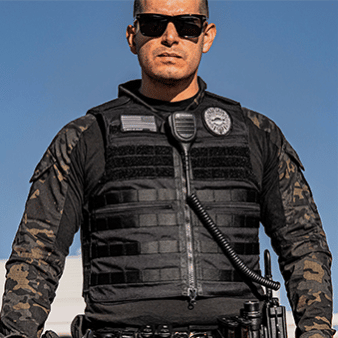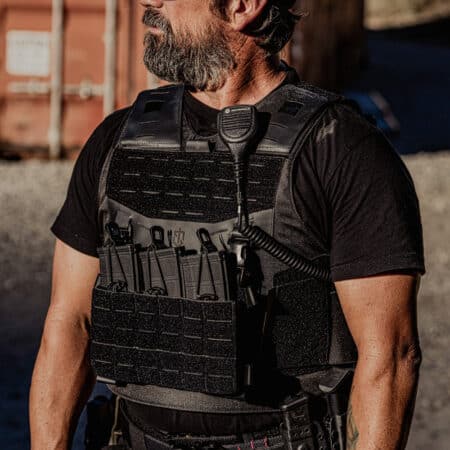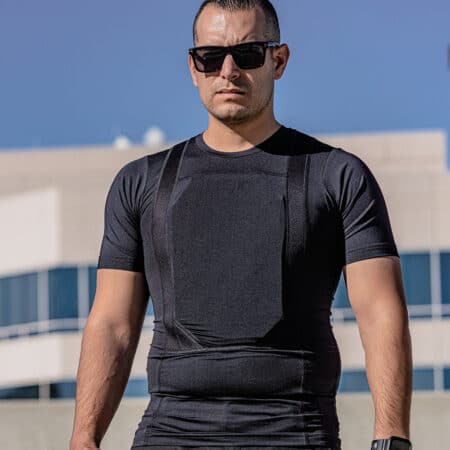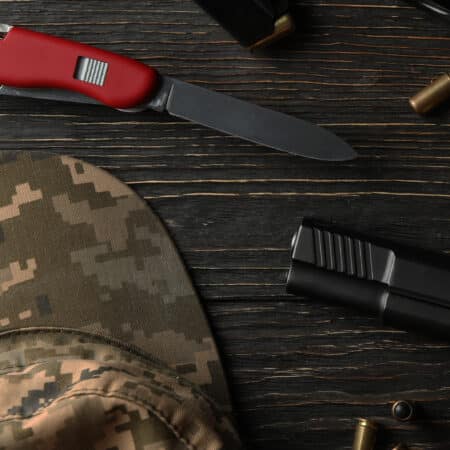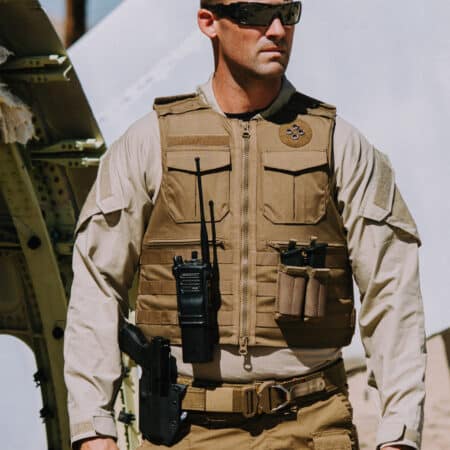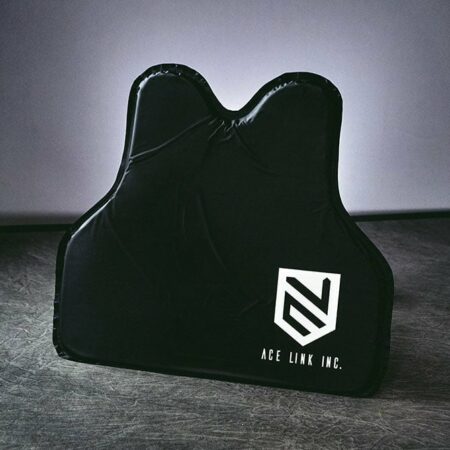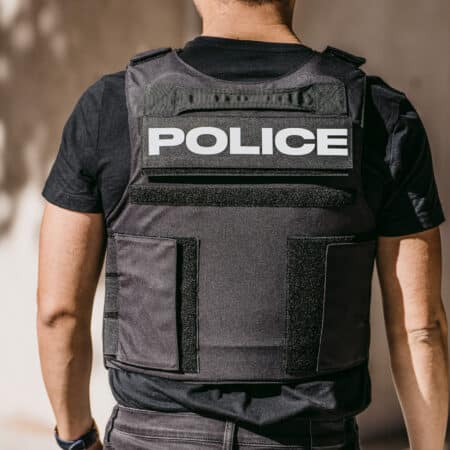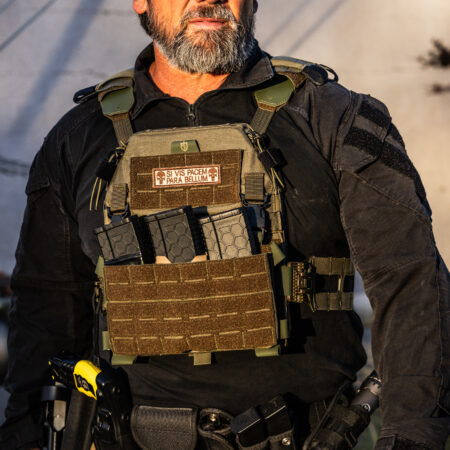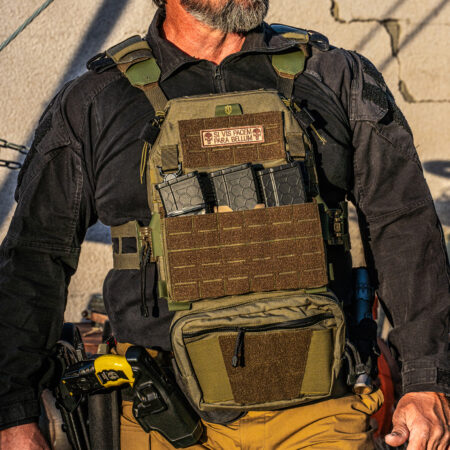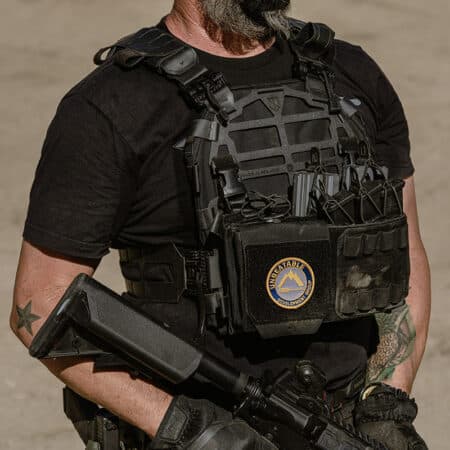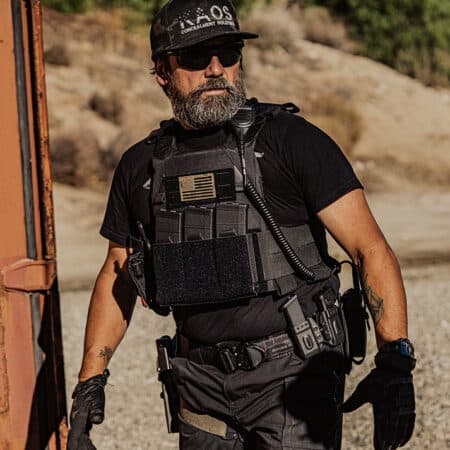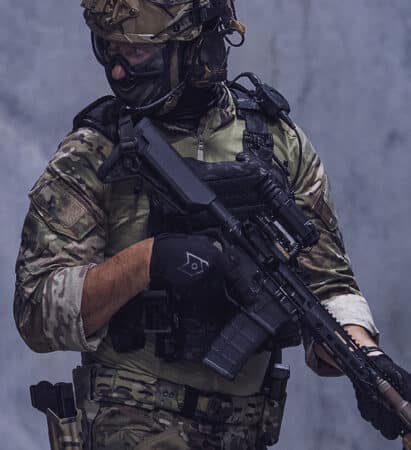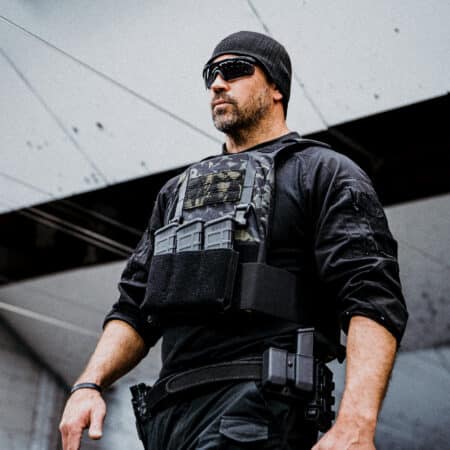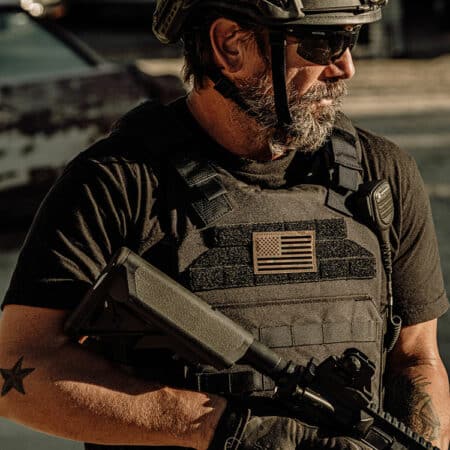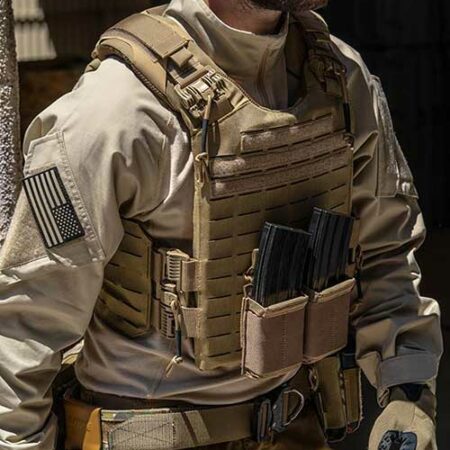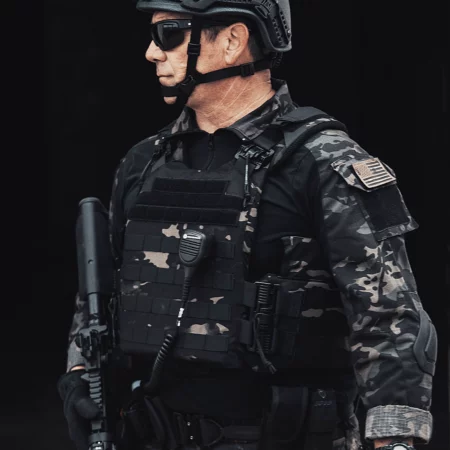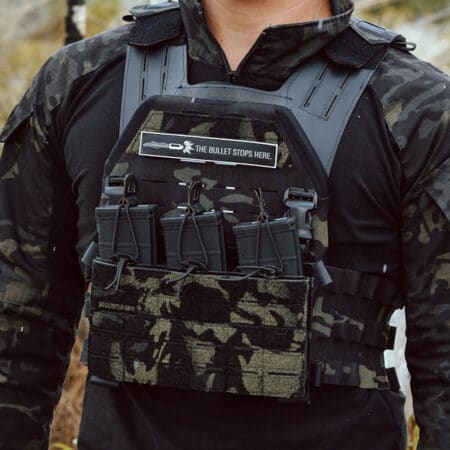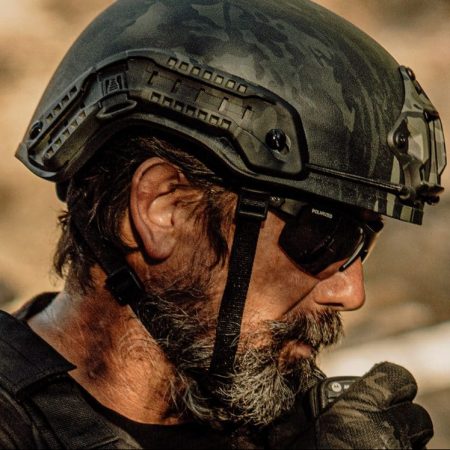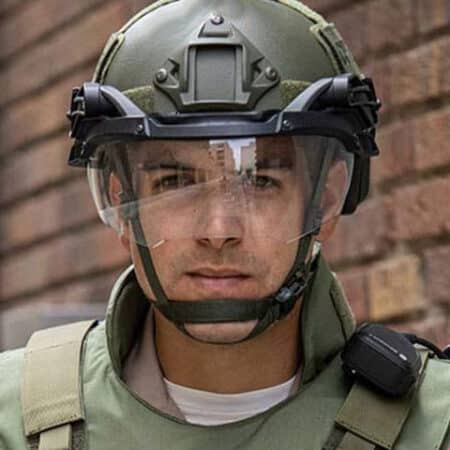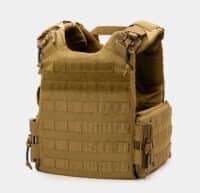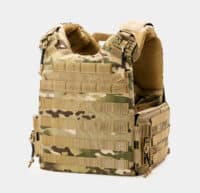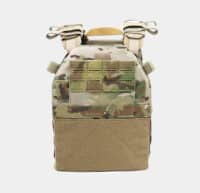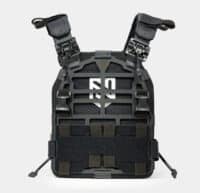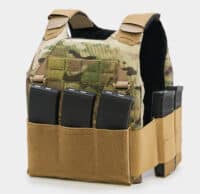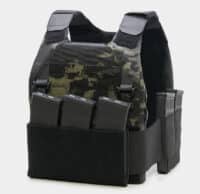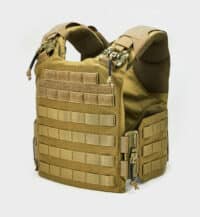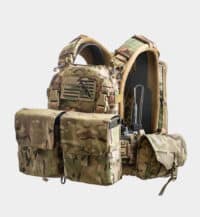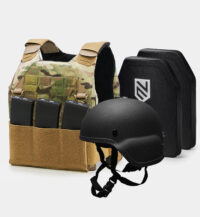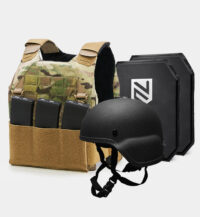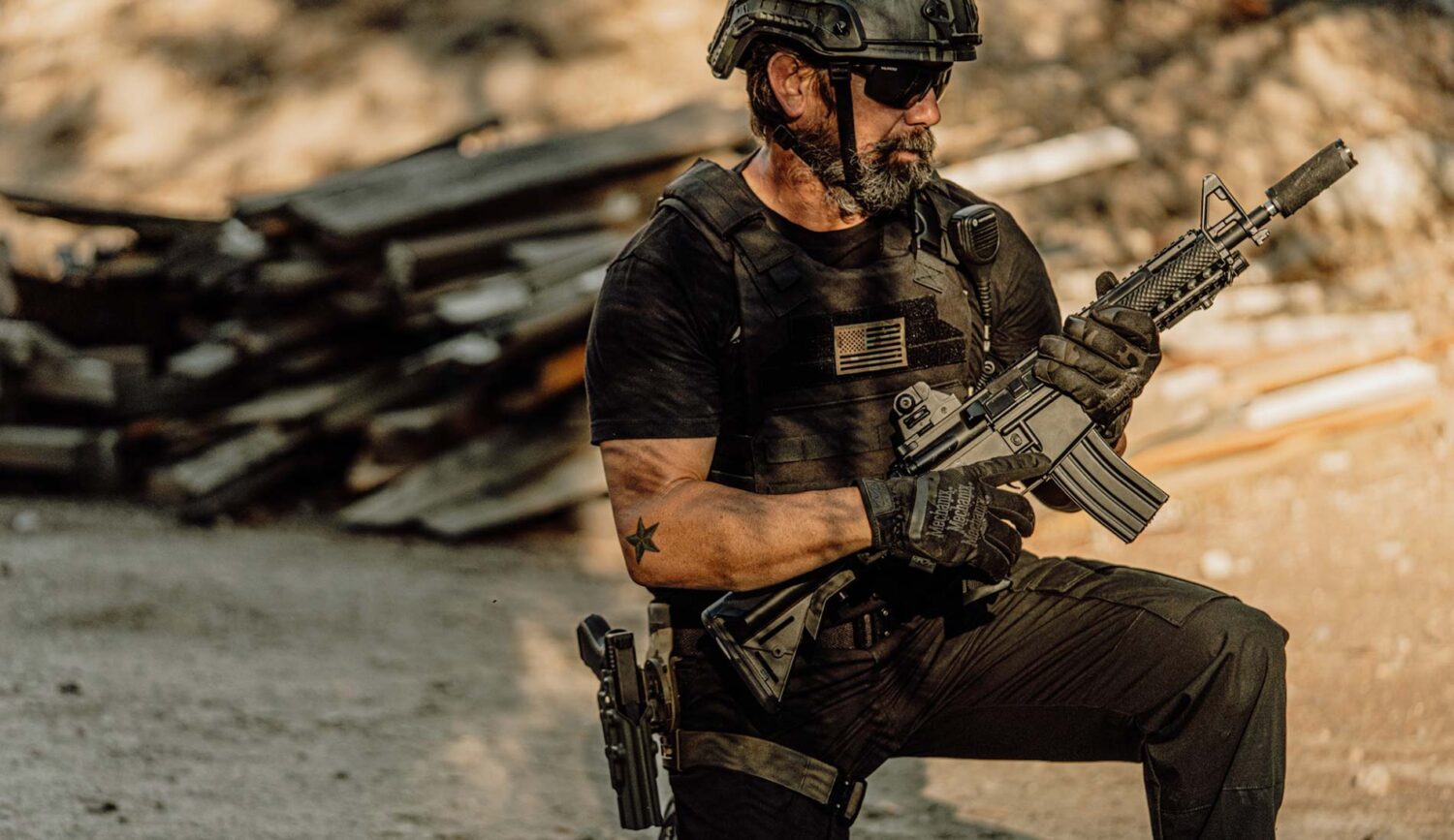
Plate Carriers
ALL TACTICAL PLATE CARRIER VESTS
THE BEST PLATE CARRIERS
FORMOZA PLATE CARRIER
Durable 500D Nylon Cordura Fabric – Formoza Plate Carrier is made from durable 500D Nylon Cordura fabric.
Thanks to Multi-Size Cummerbunds: Additionally, the carrier suits a broad spectrum of body types, ensuring a custom fit for everyone.
SKELETAC PLATE CARRIER
Super Lightweight Construction with Kydex – The Skeletac Plate Carrier’s low-profile design prioritizes agility without compromising on durability. Its lightweight nature enhances maneuverability, making it an essential asset for high-performance scenarios.
PE-X Soft Armor Panels
PE-X
• Level IIIA + Multi-Threat Blade Resistance
• Bulletproof and Blade-Resistant Panel for Tactical Use
• Stops Handgun / Slash Threats
• Ballsitic Structure resists multiple rounds of handgun threats (up to .44 Magnum) and demonstrates strong resistance to knife and blade attacks, as shown in field testing
• NIJ.06 IIIA Tested – Lightweight and Durable Ballistic Panel
• Enhanced Blade Resistance – Withstands direct stabs and slashes under high impact conditions (based on in-house test video)
• Ideal for Law Enforcement, Security Personnel, and Tactical Operations
Know More About Plate Carriers
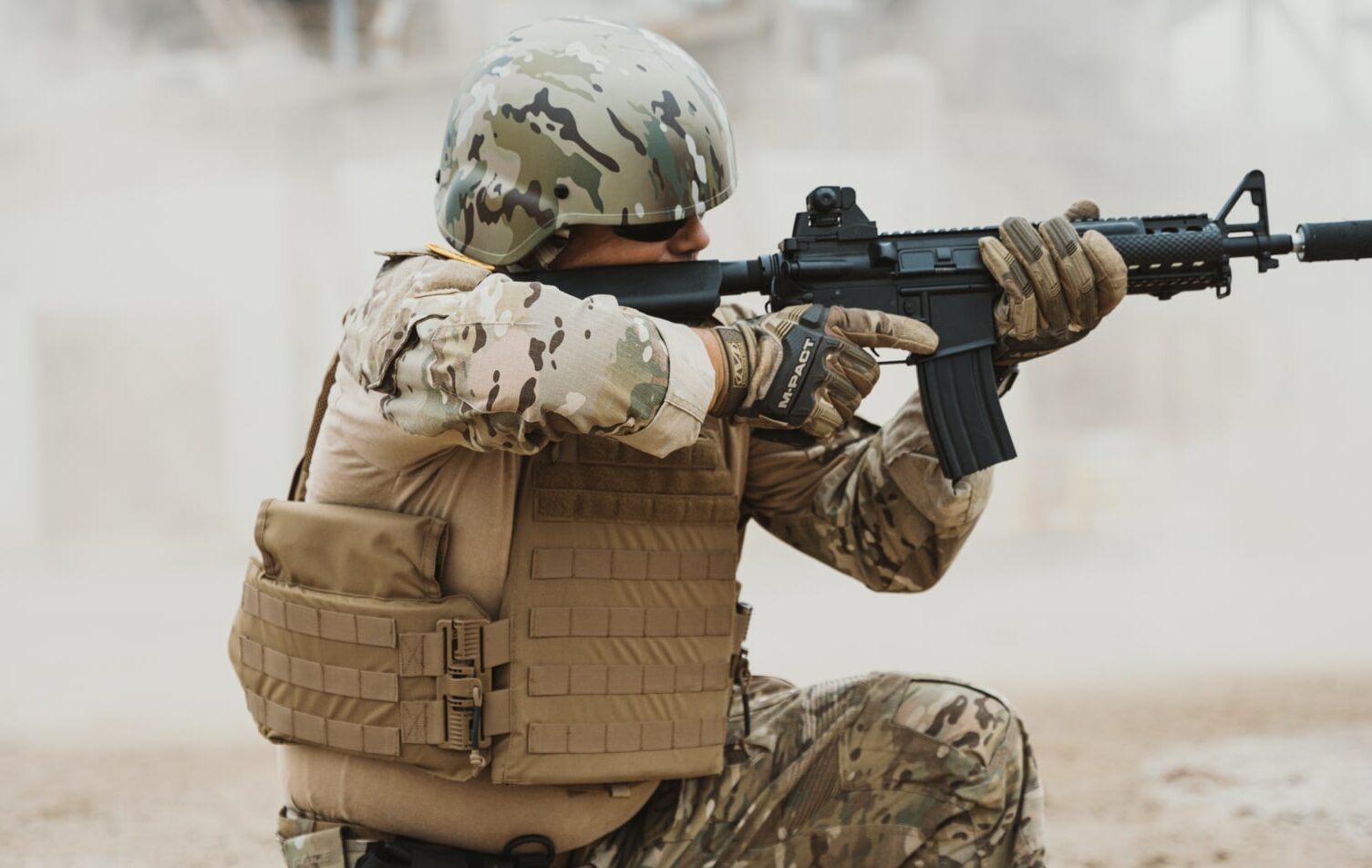
Plate Carrier Guide
Plate carriers are protective ballistic vests that can be worn over clothing. They are specifically designed to hold armor plates and any needed extra equipment. Plate carrier vests are usually used to up-armor and increase the level of protection against high velocity rifle rounds.
In an emergency situation, a plate carrier setup protects your vital organs from shrapnel and bullets.
With all of the different plate carrier vests on the market, it can be difficult to determine which one is best for you. We’ve provided some general guidelines below that should help narrow down your options so you can better understand whether a particular plate carrier will work for your needs or not.
Plate Carrier Types
If you want ballistic protection against rifles, you need to use level 3, 3+, or 4 hard armor plates, which are carried on one’s body with the help of a plate carrier. However, apart from carrying front and back plates, a plate carrier vest can also be used to carry loads of accessories like extra magazine pouches, med kits, communication gear, lights, knives, or a front map pocket.
A plate carrier setup can differ greatly depending on the individual user and varying mission sets.
There are multiple styles of carriers available in the market today with varying degrees of features that are suitable for different scenarios. However, there are always going to be some advantages and trade-offs in choosing a specific type.
Plate Carriers Types By Design
There are multiple styles of body armor carriers available on the market, which have been specially designed for different kinds of situations such as short assault missions, simple self-defense, or long missions on the front-lines. Each situation needs different levels of ballistic coverage and ease of mobility.
Short assault missions require staying as light and mobile as possible while still providing adequate coverage for close engagements. For self-defense, a concealable carrier that disappears or an overt carrier for civil unrest is preferred. Lastly, on the front-lines you want as much coverage as possible due to the increased risk of injury, especially due to fragmentation and shrapnel.
Here are some of the most common styles of plate carriers.
Tactical Plate Carrier
Tactical plate carriers are the most popular design and are suitable for a wide variety of applications. These carriers are usually made from a durable and high quality Nylon material or nylon laminate. They are designed to hold armor plates for high velocity rifle threats and offer the wearer an excellent fit.
Tactical plate carrier vests are designed to carry enough gear for small tactical missions, and they have a smaller profile than traditional full protection plate carriers. They have PALS webbing or Laser-cut webbing which allows users to mount MOLLE pouches that might be required for a tactical mission, like extra magazines, tactical knives, small medkits, comms, and other admin items.
Typically, minimalistic or medium plate carriers are used as tactical plate carriers. They are designed for quick tactical missions, rather than being worn by soldiers for super long periods of time. Therefore they are lightweight, don’t have as much padding, and other comfort increasing materials that a full heavy complete ballistic protection carrier system might have. However, they do have padded adjustable shoulder straps and side straps or cummerbund for the best fit.
Tactical plate carriers are usually worn with soft armor inserts in the side plate pockets to provide the best overall ballistic coverage, however a tactical plate carrier also accepts 6×6” or 6×8” side plates for high velocity rifle threats. Tactical plate carriers are perfect for an emergency situation as they offer good ballistic coverage, mobility, and the ability to carry pouches like medical gear.
Concealable Plate Carrier
Unlike soft armor vests, hard body armor plates aren’t as easy to conceal. They are heavy and tend to make a clear outline under your clothes. However, there are some concealable plate carriers available on the market which are designed to offer concealable ballistic protection against high velocity rifle calibers for civilians, law enforcement officials, and special units.
This type of plate carrier is usually slick and doesn’t have any kind of webbing on them for modular attachments or pouches. Concealing hard rifle plates will always be more difficult than soft armor. Where soft armor is thin and conforms to the shape of your body, hard ballistic plates are thick and do not.
A Concealable plate carrier can come in multiple colors, however, white is commonly used, as it won’t show through light colored clothes. They also have moisture wicking properties inside to prevent discomfort due to heat and sweat.
As far as plate capacity is concerned, a typical concealable plate carrier can hold two ballistic plates, one in the front and another in the back. Some carriers may also have soft side armor pockets on the sides, however, that isn’t common.
MOLLE Full Protection Plate Carrier
Lastly, we have a MOLLE full protection plate carrier system, which is usually the heaviest with the most attention to comfort and longevity. These are the kind of plate carriers that soldiers would wear during normal patrols and enemy engagement. It is the standard issue of the US military.
They have a lot of distinct features, like emergency drag handles, which allow soldiers to help injured team members and drag them out of harm’s way. Moreover, they have quick release buckles, which allow the entire plate carrier system to be removed by pulling a single tab. This makes it much easier for combat medics to get to chest injuries and treat them. It also allows the heavy full protection plate carrier to be quickly ditched in maritime environments to prevent drowning.
These plate carriers have MOLLE webbing surrounding the carrier, to attach MOLLE pouches and other modular gear. This is essential to carry the amount of gear required for a soldier like mag pouches, radios, a map pocket, IFAK, and more. The MOLLE webbing is present both on the front and back, and on the cummerbund as well. This allows the individual to carry enough gear and create a plate carrier setup that perfectly fits the mission.
A full protection plate carrier is typically made to be as comfortable as possible due to the weight and duration of use. That means that they have padded and mesh interiors to ensure better air flow. They also have padded adjustable shoulder straps, and to increase comfort and convenience.
They also have the highest plate capacity, allowing you to add different levels of ballistic plates in the front and back plate pouches, along with soft armor or even hard side plates in the side soft armor pockets. They also are compatible with ballistic accessory panels such as bicep armor, groin protectors, and neck armor.
What plate carrier does the army use?
The US army currently uses the Soldier Plate Carrier System (SPCS), or as it is commercially known, the KDH Magnum TAC-1. The TAC-1 was adopted by the army in 2009, as an alternative to the previously used IOTV (Improved Outer Tactical Vest) plate carrier system.
The army tested many different carriers and KDH Defense Systems won the contract since the TAC-1 provided better protection than the IOTV while being significantly lighter.
The carrier is made from high quality nylon and is designed to carry Small Arms Protective Insert (SAPI) ballistic plates in the plate pockets present on both the front and back. Moreover, the carrier comes with a side plate pouch, which can also accept soft or hard armor and can also be replaced by a loop closure adjustable cummerbund for carrying additional tactical gear.
The SPCS plate carrier system also features MOLLE webbing on both the front and back, which can be used for a variety of modular attachments or pouches. The SPCS has a sleek design, and like the old IOTV, the groin and lower back guards can also be attached to the carrier. This plate carrier also has adjustable shoulder straps, and side enclosures to ensure a snug fit.
How should a plate carrier fit?
When you are wearing a plate carrier, it is very important that it fits your body perfectly, to ensure the protection of your vital organs, without losing any mobility, or being uncomfortable.
Snug but not too tight.
Your plate carrier should ideally be snug, but not so tight that it restricts breathing or movement. Keep in mind that when you are in a self-defense situation, your breathing will be heavy, and your chest will expand a lot more than when you are breathing normally. So, if your plate carrier is too tight, it can cause discomfort when your breathing rate increases.
At the same time, your plate carrier should not be so loose that it shifts and moves around when you are running or doing any other activity.
Ideally, you should wear your carrier, and take some deep breaths. Your plate carrier should just start to feel tight when your chest is fully expanded. An excellent way to determine the fit of the plate carrier is to simply do a few burpees and pushups while wearing it. This also incorporates a wide range of motion to test mobility while wearing the carrier. Also, try twisting your torso to make sure that the plate carrier doesn’t shift too much to cause any discomfort.
Properly positioned.
The proper positioning of your plate carrier is also essential to ensure a proper fit and coverage of vital organs. Ideally, you want the plate width to be just inside your nipples side to side, and the plate height to cover your torso from the top of the breastbone down to a couple of inches above the belly button when you are sitting down. You can use the adjustable shoulder straps on your carrier to set its height.
Lastly, make sure that your plate carrier fits with your weapons as well. It should not block the stock of your rifle, or make it difficult to quickly draw your sidearm. Try doing some speed reload and access drills while wearing your plate carrier to ensure that it works well with your weapons and other pouches.
PLATE CARRIERS FREQUENTLY ASKED QUESTIONS
What is a plate carrier, and how to choose the best one?
Plate carriers are protective vests that can be worn over clothing. They are designed to carry ballistic armor inserts and other items. It can protect your vital organs from shrapnel and bullets if you are caught in an explosion, shooting, or other emergency situation.
With all of the different items vests on the market, it can be difficult to determine which one is best for you. We’ve provided some general guidelines below that should help narrow down your options so you can better understand whether a particular vest will work for your needs or not.
What is a plate carrier?
Plate carriers are a type of tactical bulletproof vest that can hold rifle plates and other equipment.
The first ones were designed in the 1930s by a Swiss company, and they have since been used for military purposes but not only.
More recently, tactical plate carriers have also been used as protective gear by law enforcement officers, SWAT teams, and emergency responders. Don’t worry – Civilians can wear them too!
Plate carriers are generally constructed of a durable fabric -typically made with nylon fabric and are designed to carry armor plates on the front and back, as well as in some cases side plates.
You should also consider buying an armor plate in addition to your plate carrier vest if you do not have armor plates or any other armor already.
A high-quality armor plate that is level III, Level III+ or Level 4 is the perfect companion to a plate carrier.
Are plate carriers legal?
This is one of the first questions you should ask before buying armor plate carriers. There are plenty of places that sell them, but you should always check your local laws and regulations first before purchasing one.
Some states have restrictions on what is considered body armor, so it’s important to be aware of the law in your area before ordering a carrier vest online or over the phone.
State laws can vary across different regions; for example, some areas restrict bulletproof vests while others allow them.
You also need to be aware if there are any federal restrictions on who can purchase and own this type of equipment.
They are legal in most countries and the U.S., but if you live in a country where they are not, it is best to check with both your local authorities as well as customs before traveling abroad to purchase one.
How do you choose the best plate carrier?
So you want to buy one of the carrier vests but don’t know what size or type would be appropriate for your needs. What should you do first?
Well, it’s important that you identify what exactly is needed from the vest and then tailor it accordingly.
There are many variables when choosing a carrier vest for your needs but one thing is sure – There’s not one right answer because everyone has different considerations in selecting their gear. However, we’ve compiled this list with some factors you might want to consider before making up your mind:
What type of situation will you need it for? (workplace violence, active shooter, range day)
How much money do you want to invest into a decent piece of equipment like this?
The price can range anywhere between $80-$600 or more, depending on how high quality the vest is as well as its size.
What is your weight and height?
How much do you want to carry on your plate carrier duty gear? Is it just a single item or are other items also required such as handcuffs, pepper spray, etc.?
The rule of thumb when choosing any type of protective gear is that you should get the best quality equipment you can afford.
Remember, body armor is a serious investment and not something to be taken lightly! Here at Ace Link Armor, we carry many types of tactical vests, including various plate carriers bundled with armor plates – knowns as Body Armor Packages.
Gear up with top-of-the-line plate carrier vests and be prepared for anything!
What size plate carrier do I need?
The size of the plate carrier you need depends on how you will use it and the size of the individual. For example, someone participating in a shooting competition will likely want a lightweight plate carrier carrying smaller and lighter armor plates, designed for mobility and speed.
On the other hand, law enforcement officers will want to choose from more heavy-duty plate carriers with ballistic plates which offer protection against rifle rounds as well.
Most of the plate carriers will fit only 10×12″ and smaller plate carriers plate. If you need a bigger carriers plate to protect your torso, make sure you check Quadrelease Ultra for 11×14″ plates – these line plate carrier vests are capable of carrying SAPI XL armor plates of size up to 11×14″! Larger, 11×14″ armor tactical plate is recommended so there is more coverage over vital areas such as your abdomen and pelvis region.
How to set up a plate carrier?
There are a few different ways to find the best setup for your plate carrier. With either option, make sure to measure chest circumference accurately. This number will tell us which size should be perfect for most people’s needs.
For the best fit of plate carrier vests, follow these steps:
Measure yourself and compare those measurements with all of our sizes, then choose the best one based on what is available at Ace Link Armor.
Once you’ve chosen one that fits your needs, it’s time to assemble it! If your kit includes a carrier, plates, and other parts then follow these steps:
Insert the armor plates into your body armor gear and place one side of the front and back panels on either side of your body, making sure they are aligned with each other in a straight line. This will help you know that all parts are ready for assembly to proceed!
Put your arms through the shoulder straps of your plate carrier vest so you can reach them easily when wearing a vest carrier over clothes. Bring the bottom two loops around from behind and up under both shoulders while ensuring that there’s enough length left for adjustment if needed. Make sure not to twist any straps during this process as it could cause discomfort.
Now that the bottom loops are in place, you can adjust your shoulders straps to make sure the weight of the carrier and armor plates is distributed evenly.
Please remember that body armor provides protection only when the tactical plate or body armor plates are inserted!
Popular brands of plate carriers vests.
There are many different brands available on today’s market but if we had to choose one we would go with Ace Link Armor because our products are durable enough for military use while still being affordable options for civilians in need of protection too.
Our choice for Top 10 best plate carriers in 2021:
Quadrelease Plate Carrier
Skeletac Plate Carrier
Blackhawk Omega Elite Tactical Vest
Crye Precision Adaptive Vest System (AVS)
Condor Sentry
Armor Express PC
KDH SPCS TAC-1
Crye Precision JPC 2.0
Crye Precision AirLite SPC
LBT Modular PC LBT-6094A
If by now you still haven’t been able to decide what type of armor would suit your personal style and need most, feel free to send us an email – our customer service will do their best to answer any questions you may have about armor carriers and tactical plate.
And don’t forget! When picking up a new carrier vest make sure they come equipped with body armor plates in plate pockets – otherwise there’s no point in even wearing them!
Most popular types of plate carriers.
The most popular type of plate carrier is the SAPI/ESAPI cut or profile Hard Armor Plate Carriers. Both these types of plate carriers feature the ability to accommodate hard ballistic plates worn inside the tactical plate carrier.
The hard armor plate carriers also allow easy access to magazine pouches and other essential equipment. Such tactical plate carriers are primarily used by military personnel such as the Navy Seals or Army Rangers, as well as special forces from other countries around the world. There is a misconception that they are only worn by soldiers and can’t be used for regular people due to their cost (the best plate carrier usually range between $200-$600). However, this is not true, especially since there are many affordable options available on the market.
For example, here at Ace Link Armor, we offer several high-grade and low-cost tactical plate carriers for you to choose from – our goal is to provide the best quality gear at the lowest price. What’s more, we offer a 30-day money-back guarantee in case you’re not satisfied with the product; so there’s no risk involved! On our website you can find accessory body armor items as well.
SAPI Plates Sizing
Hard Armor Plates provide ballistic protection function to the whole plate carrier vest. SAPI body armor plates come in sizes Small, Medium, Large, and Extra-Large. These are measurements of the front opening or plate carriers body armor plate pocket. However, any given size SAPI plate will fit onto a range of plate carrier vests made by various manufacturers which have different dimensions for their pockets. It is important to note that the ESAPI’s are narrower than the SAPI Plates, so they measure for a smaller size compared to their length and height.
The main difference between the SAPI and ESAPI body armor plates is their shape. The SAPI stands for Small Arms Protective Insert, and those armor plates are designed to be square, with no curvature to them. The ESAPI is designed to be curved at the top so that they conform more snugly to a person’s body, as well as being wider in general compared to the SAPI plates. Soldier plate carrier system accommodates both types of body armor plates, same as bulletproof vest which can have pockets for ballistic plates too. It’s a common feature for a military plate carrier, tactical gear and body armor available on the market.
When choosing which plate will fit you best you should consider how tight or loose your current plate carrier fits over your body armor, what sorts of materials the front pockets on your plate carriers are made from, and whether or not any extra pouches built into it (such as magazine pouches) affect its dimensions.
Components of a plate carrier.
Today’s plate carriers are side-opening (some older plate carriers are open-front) and have four main parts that comprise the item. Tactical Plate carriers have two plate pockets that are designed hold an armor plate in place in both the front and back to provide adequate protection against gunfire from pistol or rifle calibers. They also have adjustable shoulder straps and a cummerbund. Usually, the best plate carriers designed for law enforcement officers feature an emergency drag handle as well.
Protecting your vitals.
This armor system uses both front and back rigid plates providing coverage to the vital organs and spinal cord areas of the human body. Only these vital areas are necessary to be covered due to the life-essential functions of your heart, lungs, liver, stomach, and kidneys provide- and as mentioned, the spinal cord where the function of such vital organs rely upon transmitting electrical messages to keep the human body functioning effectively.
Shoulder straps.
The next area or parts of the tactical plate carriers are the shoulder straps- by which the plate carrier rests on top of the wearer’s collarbones and both shoulders. Tactical Plate carrier vests straps are usually made of durable nylon material that is both adjustable and comfortable.
Each shoulder strap utilizes hook and loop panels to secure the ends of each strap onto the itself- preventing them from loosening after the wearer has adjusted both for proper fit and placement of the plate carrier.
For added comfort and to aid the wearer in experiencing less fatigue and preventing shoulder hot-spots, shoulder straps come with integrated shoulder padding that is both effective in increasing comfort and disperses the load or weight that the wearer holds. This is very important when wearing a heavy plate carrier with both front and back plates, and any required ammunition; grenades; smoke canisters; IFAK; and other essential gear.
Cummerbund or belt.
The final plate carrier part is the cummerbund or belt: This is an adjustable waist strap that most plate carriers have. The purpose of this plate carrier component is to hold the plate pockets and help the shoulder straps stay appropriately fastened and securely onto the plate carrier- more importantly, to help keep the plate carrier properly level and centered on the wearer’s torso; otherwise, the armor plate can move around when a plate carrier is worn on top of regular clothing. The cummerbunds also serve as additional protection from gunfire or trauma by holding soft armor panels or hard armor side plates in front of vital organs- such as your kidneys and liver- and the ribcage which protects the stomach, lungs and heart.
 go back
go back
YOUR SHOPPING CART
your cart is empty



